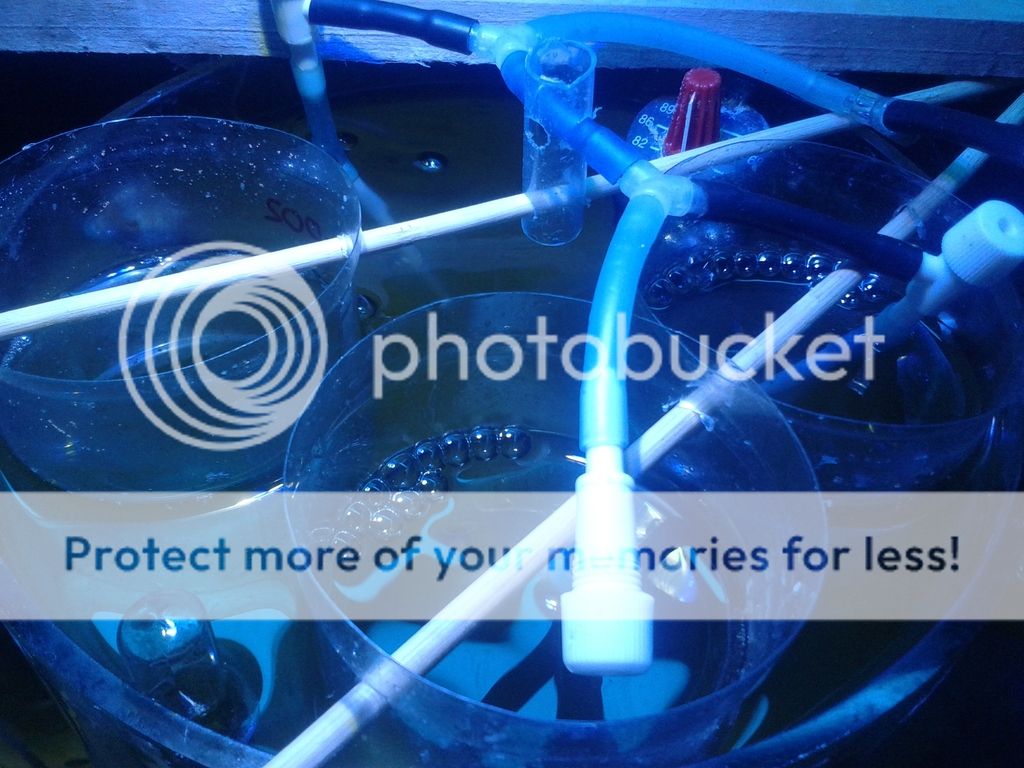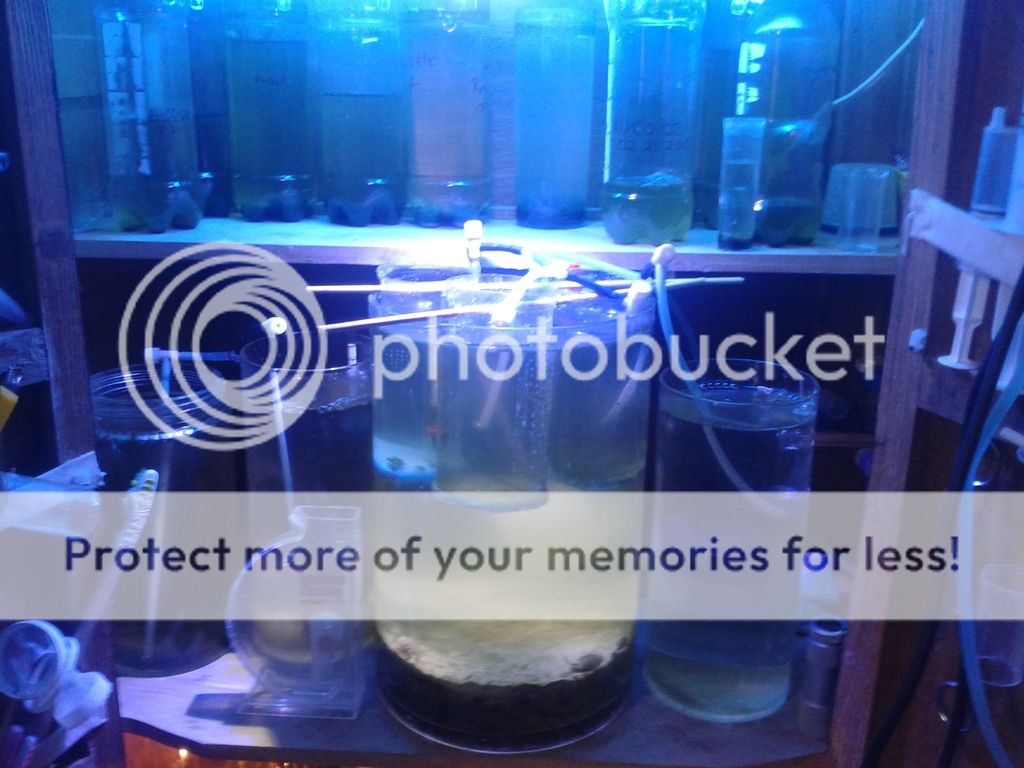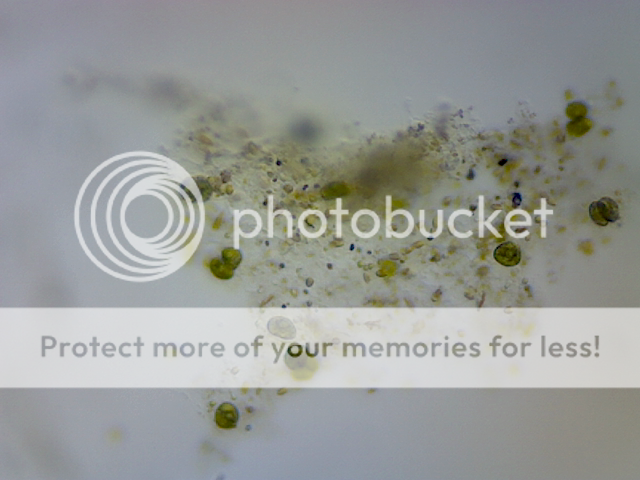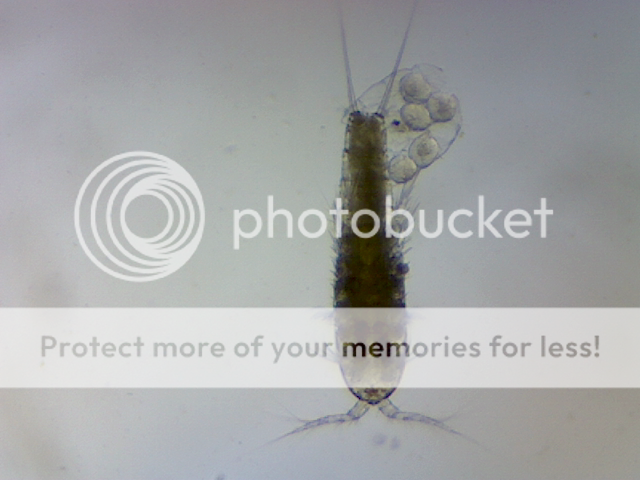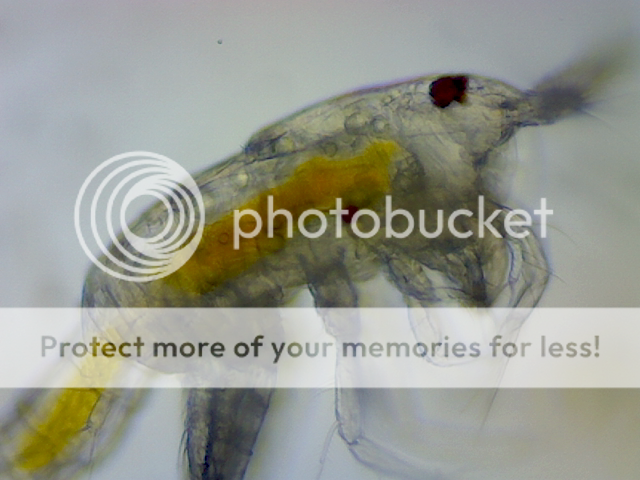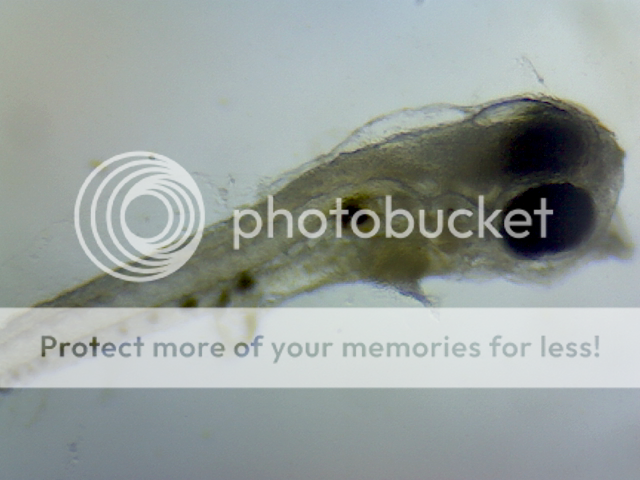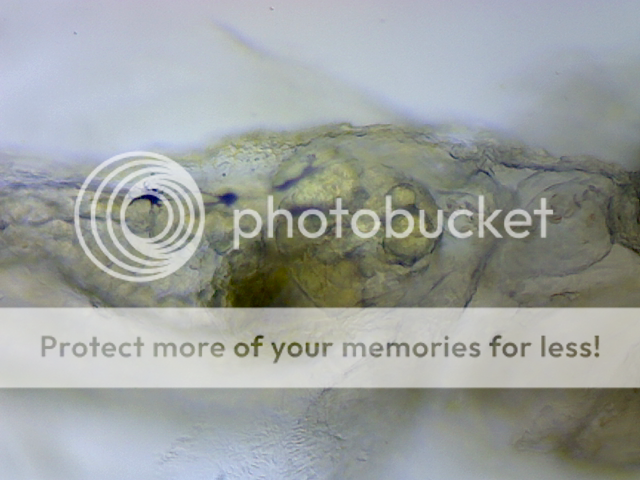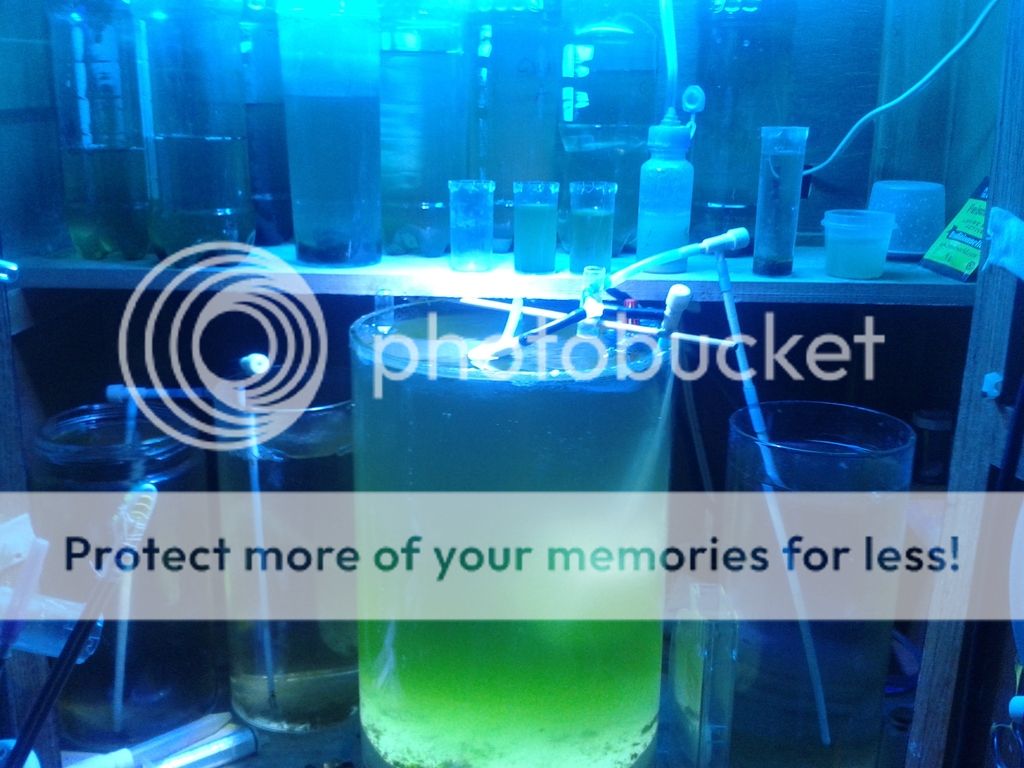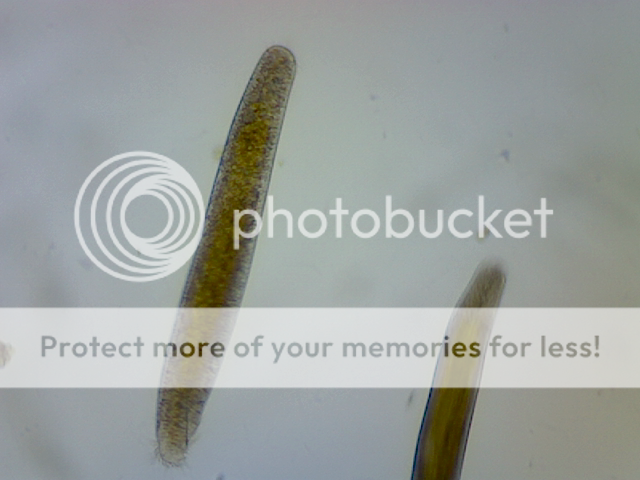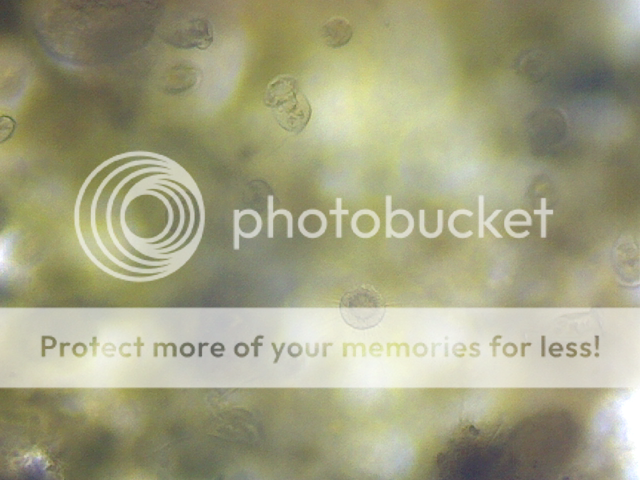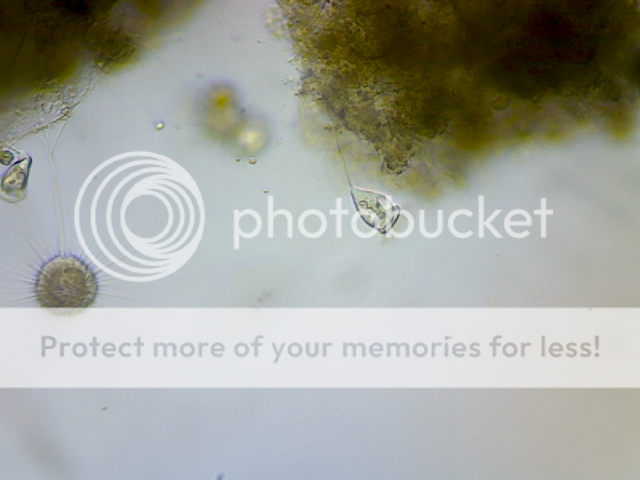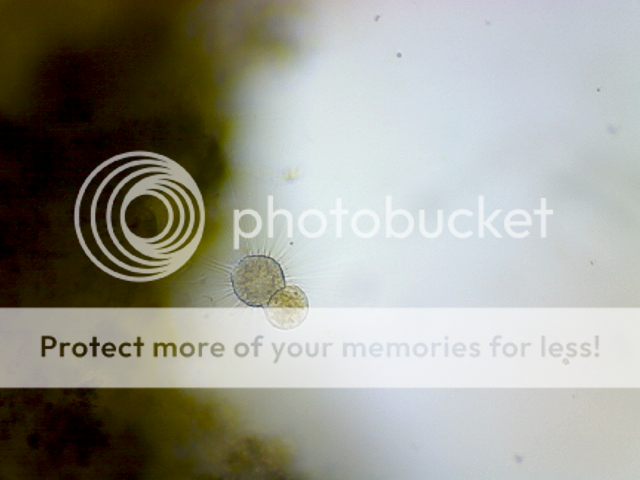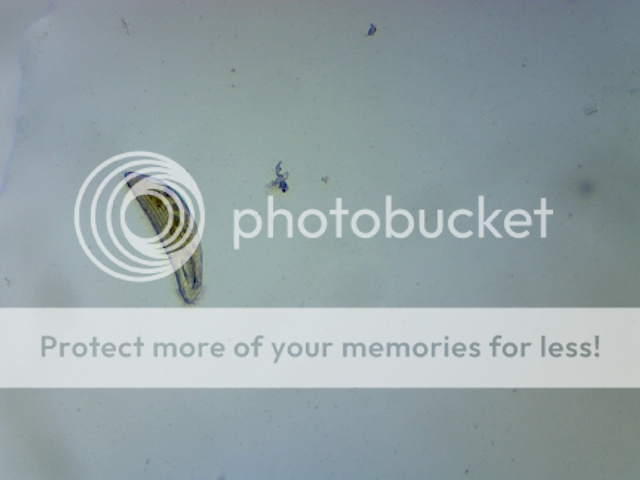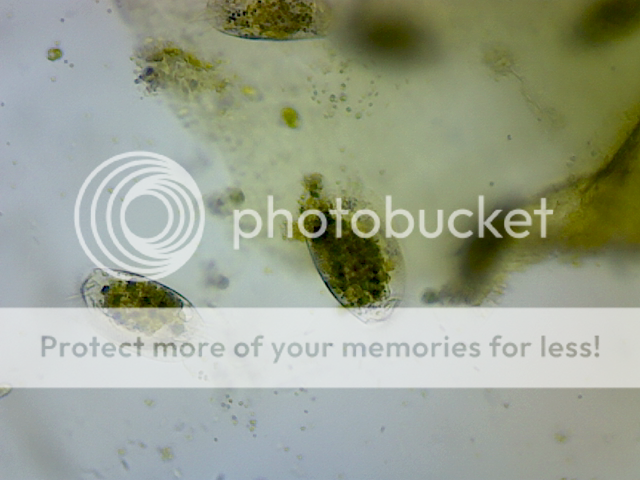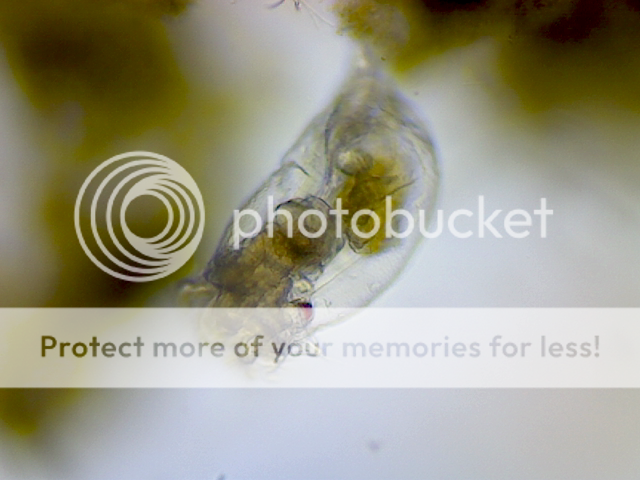gogo7
pico reefer
just an update.
i've cleaned up the rearing vase. cleaned out so many hydroids that i'm embarassed to mention how many. but i gotta tell you, those bell hydroids look super cool under the microscope.
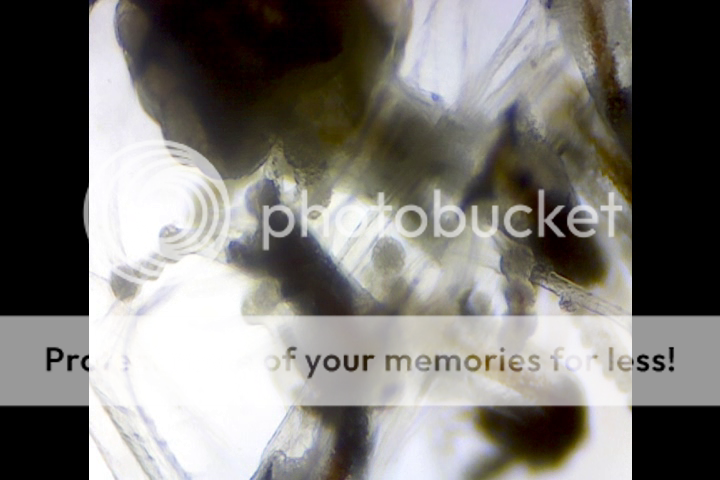 .
.

i removed most of the live rock without disturbing the sand too much. kicked up quite a lot of crap that i seived through the 56 screen, and looked at under the scope. there's so many different looking things in there there's gotta be something the gobies can eat. lots of different ciliates, so many i'm doing frame captures and gonna put an id thread up.
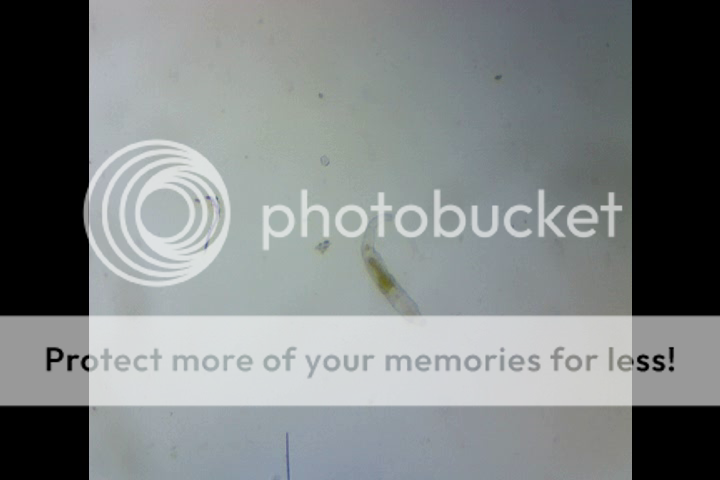
a new rotifer..?
discovered that i've still got iso growing in there!
i've got both shrimp and gobie larva in two pop bottles that i've cut the tops and bottoms off of and glued a scrubbie disk to act as filter-gate. they've got pin ***** holes in the sides to facilitate circulation. the gobies are contained in their container and they're doing okay. i sacrificed one to check it's gut. it had phyto in there. i am kicking myself over loosing the video. i'm still getting used to the software. the gobie larva are eating ciliates too. i couldn't quite get a good image of the internals though. there was defnitely different types of prey items in there. i'm not sure if it was the added ciliates, c-02, or ciliate a, or if it was the natural fauna already existing in the vase. the sandbed in that vase has been alive for a few years. they've passed the forty hours faze. i'm not expecting the remaining six to still be there tomorrow, if they are, i'm going to sacrifice anther and try and get a good image of the gut. also compare growth to other images i have.
the pistol shrimp zoa are doing well, considering i didn't expect any to get passed the 24 hr stage. my other species of carribeans didn't get the attention they probably should have gotten. but this time i'm devoted. they look good and healthy, feeding on rotifers and phyto. i think that the tetra is a good first food. it's active and evokes a feeding response. i've gotta pick up some nanno.
i'm getting fully prepped for the next batch. considering rearing methods and done a heck of a lot of reading on everything i can find.
back in a few days
i've cleaned up the rearing vase. cleaned out so many hydroids that i'm embarassed to mention how many. but i gotta tell you, those bell hydroids look super cool under the microscope.


i removed most of the live rock without disturbing the sand too much. kicked up quite a lot of crap that i seived through the 56 screen, and looked at under the scope. there's so many different looking things in there there's gotta be something the gobies can eat. lots of different ciliates, so many i'm doing frame captures and gonna put an id thread up.

a new rotifer..?
discovered that i've still got iso growing in there!
i've got both shrimp and gobie larva in two pop bottles that i've cut the tops and bottoms off of and glued a scrubbie disk to act as filter-gate. they've got pin ***** holes in the sides to facilitate circulation. the gobies are contained in their container and they're doing okay. i sacrificed one to check it's gut. it had phyto in there. i am kicking myself over loosing the video. i'm still getting used to the software. the gobie larva are eating ciliates too. i couldn't quite get a good image of the internals though. there was defnitely different types of prey items in there. i'm not sure if it was the added ciliates, c-02, or ciliate a, or if it was the natural fauna already existing in the vase. the sandbed in that vase has been alive for a few years. they've passed the forty hours faze. i'm not expecting the remaining six to still be there tomorrow, if they are, i'm going to sacrifice anther and try and get a good image of the gut. also compare growth to other images i have.
the pistol shrimp zoa are doing well, considering i didn't expect any to get passed the 24 hr stage. my other species of carribeans didn't get the attention they probably should have gotten. but this time i'm devoted. they look good and healthy, feeding on rotifers and phyto. i think that the tetra is a good first food. it's active and evokes a feeding response. i've gotta pick up some nanno.
i'm getting fully prepped for the next batch. considering rearing methods and done a heck of a lot of reading on everything i can find.
back in a few days



